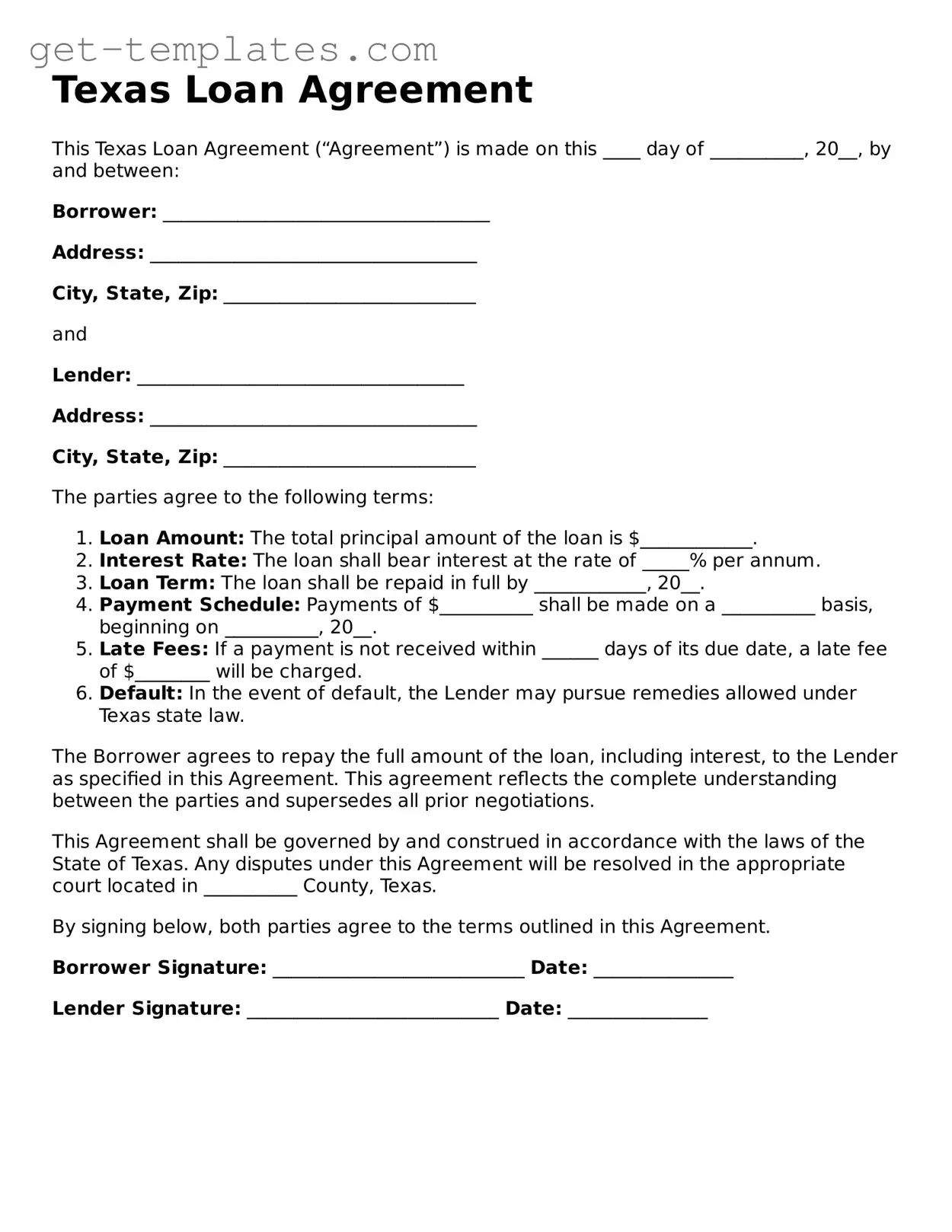Texas Loan Agreement
This Texas Loan Agreement (“Agreement”) is made on this ____ day of __________, 20__, by and between:
Borrower: ___________________________________
Address: ___________________________________
City, State, Zip: ___________________________
and
Lender: ___________________________________
Address: ___________________________________
City, State, Zip: ___________________________
The parties agree to the following terms:
- Loan Amount: The total principal amount of the loan is $____________.
- Interest Rate: The loan shall bear interest at the rate of _____% per annum.
- Loan Term: The loan shall be repaid in full by ____________, 20__.
- Payment Schedule: Payments of $__________ shall be made on a __________ basis, beginning on __________, 20__.
- Late Fees: If a payment is not received within ______ days of its due date, a late fee of $________ will be charged.
- Default: In the event of default, the Lender may pursue remedies allowed under Texas state law.
The Borrower agrees to repay the full amount of the loan, including interest, to the Lender as specified in this Agreement. This agreement reflects the complete understanding between the parties and supersedes all prior negotiations.
This Agreement shall be governed by and construed in accordance with the laws of the State of Texas. Any disputes under this Agreement will be resolved in the appropriate court located in __________ County, Texas.
By signing below, both parties agree to the terms outlined in this Agreement.
Borrower Signature: ___________________________ Date: _______________
Lender Signature: ___________________________ Date: _______________
